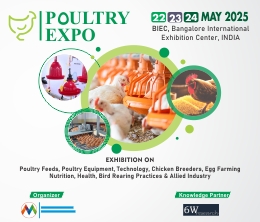France Cotton Market (2025-2031) | Forecast, Size, Share, Segmentation, Growth, Value, Revenue, Analysis, Industry & Outlook
Market Forecast By Production Analysis (Volume), By Consumption Analysis (Value, Volume), By Export Analysis (Value, Volume), By Import Analysis (Value, Volume), And Competitive Landscape
| Product Code: ETC212182 | Publication Date: Sep 2022 | Updated Date: Feb 2025 | Product Type: Market Research Report | |
| Publisher: 6Wresearch | No. of Pages: 60 | No. of Figures: 40 | No. of Tables: 7 | |
France Cotton Market Competition 2023
France Cotton market currently, in 2023, has witnessed an HHI of 843, Which has decreased slightly as compared to the HHI of 1274 in 2017. The market is moving towards highly competitive. Herfindahl index measures the competitiveness of exporting countries. The range lies from 0 to 10000, where a lower index number represents a larger number of players or exporting countries in the market while a large index number means fewer numbers of players or countries exporting in the market.
France Export Potential Assessment For Cotton Market (Values in USD Thousand)
Topics Covered in the France Cotton Market Report
France Cotton Market report thoroughly covers the market By Production Analysis, By Consumption Analysis, and By Import Analysis. The market report provides an unbiased and detailed analysis of the ongoing market trends, opportunities/high growth areas, and market drivers which would help the stakeholders to devise and align their market strategies according to the current and future market dynamics.
France Cotton Market Synopsis
The France cotton market is a critical component of the country's textile and fashion industry, despite France not being a cotton producer itself. It operates primarily as an importer and processor of raw cotton, which is transformed into high-quality textiles and garments for both domestic consumption and international export. France’s standing in the global fashion industry significantly amplifies its role in the cotton supply chain.
According to 6Wresearch, the France Cotton Market is anticipated to grow at a CAGR of 5.7% during the forecast period 2025-2031. Several factors drive the France cotton market. The first is strong global demand for France textiles and apparel, particularly from luxury fashion houses that rely on premium cotton fabrics. Secondly, France’s focus on innovation and sustainability in textile processing ensures that its products remain competitive in international markets. Increased consumer preference for organic and sustainable clothing also propels the demand for ethically sourced cotton. Furthermore, France benefits from its strategic trade networks and access to high-quality cotton imports from leading producers for the France Cotton Market growth.
Despite its strengths, the France cotton market faces notable challenges. One significant issue is the volatility of raw cotton prices, driven by fluctuations in supply and global demand. Additionally, sourcing organic and sustainably produced cotton at scale can be both expensive and logistically complex. The sector also encounters competitive pressures from emerging textile markets offering lower production costs.
France Cotton Market Trends
The France cotton market is witnessing several notable trends that are shaping its future trajectory. There is an increasing focus on sustainable and organic cotton, driven by heightened consumer awareness and the demand for eco-friendly products. Innovations in textile production, such as using recycled fibers and advanced spinning technologies, are also gaining traction. Furthermore, digital transformation within the supply chain is enabling better traceability, transparency, and efficiency, ensuring compliance with sustainability standards.
Investment Opportunities in the France Cotton Market
The France cotton market presents a range of attractive investment opportunities. Companies investing in sustainable cotton cultivation and processing have potential to capitalize on the growing demand for responsibly produced textiles. Additionally, ventures focusing on technological advancements in textile manufacturing, including automation and environmentally friendly dyeing techniques, are well-positioned for long-term growth. Opportunities also exist in developing robust recycling systems for cotton-based materials, thereby aligning with the circular economy model.
Leading Players in the France Cotton Market
The France cotton market is supported by several key players that play an integral role in its growth and development. Leading companies such as Kering, LVMH, and Lacoste have established themselves as prominent consumers and innovators in the cotton textile industry, particularly emphasizing sustainable practices. Textile manufacturers like Groupe Chamatex and Sagaert are also noteworthy contributors, driving advancements in recycled and organic cotton production. These players, along with smaller yet dynamic enterprises, are vital in maintaining France's competitive edge in the global cotton market through their commitment to quality and innovation.
Government Regulations in the France Cotton Market
Government regulations play an essential role in ensuring the sustainability and competitiveness of the cotton market in France. Policies focus on promoting environmentally responsible farming practices, reducing the use of harmful pesticides, and supporting organic certification processes. Import and export guidelines are strictly enforced to maintain the quality standards of cotton and cotton-based products. Furthermore, government initiatives often provide subsidies and financial support to domestic cotton farmers, encouraging innovation and contributing to the industry's long-term growth. Regulations are also aimed at fostering fair labor practices to protect workers throughout the value chain.
Future Insights of the France Cotton Market
The future of the France cotton market is poised for growth, driven by increasing consumer demand for sustainable and ethically sourced textiles. Advancements in agricultural technologies, such as precision farming and water-saving irrigation systems, are likely to enhance productivity and reduce environmental impact. The shift towards organic and recyclable cotton products is expected to dominate market trends, aligning with global sustainability goals. Additionally, the introduction of smart textiles and digitalization of supply chains will further strengthen France's position as a leader in the global cotton market. Export opportunities and collaborations with international brands will also contribute to the market's expansion, bringing France cotton to a broader audience while preserving its reputation for quality and innovation.
Market Segmentation Analysis
The report offers a comprehensive study of the subsequent market segments and their leading categories.
Volume to Dominate the Market- By Production Analysis
According to Ashutosh, Senior Research Analyst, 6Wresearch, France's domestic production of cotton goods remains modest compared to global leaders, primarily focusing on value-added processes such as fabric finishing and high-quality garment manufacturing. While raw cotton cultivation is negligible, the country capitalizes on its advanced textile industry to produce premium cotton-based products.
The value to Dominate the Market- By Consumption Analysis
The value of cotton-based products is driven by several key factors, including product quality, brand reputation, and market demand for sustainable textiles. High-quality fabric manufacturing and innovation in textile production significantly enhance the perceived value of finished goods, particularly in the luxury fashion sector.
Value to Dominate the Market- By Export Analysis
The value of cotton imports to France has shown a steady growth trend, driven by evolving consumer preferences and the increasing demand for sustainably sourced textiles. Certified organic and fair-trade cotton products command higher price points, reflecting not only the premium placed on ethical production standards but also the willingness of consumers to invest in quality.
Key Attractiveness of the Report
- 10 Years of Market Numbers.
- Historical Data Starting from 2021 to 2024.
- Base Year 2024
- Forecast Data until 2031.
- Key Performance Indicators Impacting the Market.
- Major Upcoming Developments and Projects.
Key Highlights of the Report:
- France Cotton Market Outlook
- Market Size of France Cotton Market, 2024
- Forecast of France Cotton Market, 2031
- Historical Data and Forecast of France Cotton Revenues & Volume for the Period 2021-2031
- France Cotton Market Trend Evolution
- France Cotton Market Drivers and Challenges
- France Cotton Price Trends
- France Cotton Porter's Five Forces
- France Cotton Industry Life Cycle
- Historical Data and Forecast of France Cotton Market Revenues & Volume By Mining Technology for the Period 2021-2031
- Historical Data and Forecast of France Cotton Market Revenues & Volume By Surface Mining for the Period 2021-2031
- Historical Data and Forecast of France Cotton Market Revenues & Volume By Strip Mining for the Period 2021-2031
- Historical Data and Forecast of France Cotton Market Revenues & Volume By Auger Mining for the Period 2021-2031
- Historical Data and Forecast of France Cotton Market Revenues & Volume By Open-pit Mining for the Period 2021-2031
- Historical Data and Forecast of France Cotton Market Revenues & Volume By Mountain Removal Mining for the Period 2021-2031
- Historical Data and Forecast of France Cotton Market Revenues & Volume By Underground Mining for the Period 2021-2031
- Historical Data and Forecast of France Cotton Market Revenues & Volume By Room & Pillar for the Period 2021-2031
- Historical Data and Forecast of France Surface Mining Cotton Market Revenues & Volume By Longwall Mining for the Period 2021-2031
- Historical Data and Forecast of France Cotton Market Revenues & Volume By Application for the Period 2021-2031
- Historical Data and Forecast of France Cotton Market Revenues & Volume By Thermal Power Generation for the Period 2021-2031
- Historical Data and Forecast of France Cotton Market Revenues & Volume By Steel Manufacturing for the Period 2021-2031
- Historical Data and Forecast of France Cotton Market Revenues & Volume By Cement Manufacturing for the Period 2021-2031
- Historical Data and Forecast of France Cotton Market Revenues & Volume By Others for the Period 2021-2031
- France Cotton Import Export Trade Statistics
- Market Opportunity Assessment By Production Analysis
- Market Opportunity Assessment By Consumption Analysis
- Market Opportunity Assessment By Export Analysis
- Market Opportunity Assessment By Import Analysis
- France Cotton Top Companies Market Share
- France Cotton Competitive Benchmarking By Technical and Operational Parameters
- France Cotton Company Profiles
- France Cotton Key Strategic Recommendations
Markets Covered
The report provides a detailed analysis of the following market segments
By Production Analysis
- Volume
- Value
By Consumption Analysis
- Value
- Volume
By Export Analysis
- Value
- Volume
By Import Analysis
- Value
- Volume
France Cotton Market (2025-2031): FAQs
| 1 Executive Summary |
| 2 Introduction |
| 2.1 Key Highlights of the Report |
| 2.2 Report Description |
| 2.3 Market Scope & Segmentation |
| 2.4 Research Methodology |
| 2.5 Assumptions |
| 3 France cotton Market Overview |
| 3.1 France Country Macro Economic Indicators |
| 3.2 France cotton Market Revenues & Volume, 2021 & 2031F |
| 3.3 France cotton Market - Industry Life Cycle |
| 3.4 France cotton Market - Porter's Five Forces |
| 3.5 France cotton Market Revenues & Volume Share, By By Production Analysis, 2021 & 2031F |
| 3.6 France cotton Market Revenues & Volume Share, By By Consumption Analysis, 2021 & 2031F |
| 3.7 France cotton Market Revenues & Volume Share, By By Export Analysis, 2021 & 2031F |
| 3.8 France cotton Market Revenues & Volume Share, By By Import Analysis, 2021 & 2031F |
| 4 France cotton Market Dynamics |
| 4.1 Impact Analysis |
| 4.2 Market Drivers |
| 4.3 Market Restraints |
| 5 France cotton Market Trends |
| 6 France cotton Market, By Types |
| 6.1 France cotton Market, By By Production Analysis |
| 6.1.1 Overview and Analysis |
| 6.1.2 France cotton Market Revenues & Volume, By By Production Analysis, 2021 - 2031F |
| 6.1.3 France cotton Market Revenues & Volume, By Volume, 2021 - 2031F |
| 6.2 France cotton Market, By By Consumption Analysis |
| 6.2.1 Overview and Analysis |
| 6.2.2 France cotton Market Revenues & Volume, By Value, 2021 - 2031F |
| 6.2.3 France cotton Market Revenues & Volume, By Volume, 2021 - 2031F |
| 6.3 France cotton Market, By By Export Analysis |
| 6.3.1 Overview and Analysis |
| 6.3.2 France cotton Market Revenues & Volume, By Value, 2021 - 2031F |
| 6.3.3 France cotton Market Revenues & Volume, By Volume, 2021 - 2031F |
| 6.4 France cotton Market, By By Import Analysis |
| 6.4.1 Overview and Analysis |
| 6.4.2 France cotton Market Revenues & Volume, By Value, 2021 - 2031F |
| 6.4.3 France cotton Market Revenues & Volume, By Volume, 2021 - 2031F |
| 7 France cotton Market Import-Export Trade Statistics |
| 7.1 France cotton Market Export to Major Countries |
| 7.2 France cotton Market Imports from Major Countries |
| 8 France cotton Market Key Performance Indicators |
| 9 France cotton Market - Opportunity Assessment |
| 9.1 France cotton Market Opportunity Assessment, By By Production Analysis, 2021 & 2031F |
| 9.2 France cotton Market Opportunity Assessment, By By Consumption Analysis, 2021 & 2031F |
| 9.3 France cotton Market Opportunity Assessment, By By Export Analysis, 2021 & 2031F |
| 9.4 France cotton Market Opportunity Assessment, By By Import Analysis, 2021 & 2031F |
| 10 France cotton Market - Competitive Landscape |
| 10.1 France cotton Market Revenue Share, By Companies, 2024 |
| 10.2 France cotton Market Competitive Benchmarking, By Operating and Technical Parameters |
| 11 Company Profiles |
| 12 Recommendations |
| 13 Disclaimer |
- Single User License$ 1,995
- Department License$ 2,400
- Site License$ 3,120
- Global License$ 3,795
Search
Related Reports
- Vietnam Twisted Pair Cables Market (2024-2030) | Size & Revenue, Forecast, Share, Companies, Competitive Landscape, Analysis, Trends, Value, Segmentation, Outlook, Industry, Growth
- South Africa B2B Cleaning Market (2025-2031) | Size & Revenue, Forecast, Share, Companies, Competitive Landscape, Analysis, Trends, Value, Segmentation, Outlook, Industry, Growth
- Mexico Dispersion Market (2025-2031) | Industry, Size, Growth, Revenue, Value, Companies, Forecast, Analysis, Share & Trends
- United States Video Conferencing Market (2025-2031) | Outlook, Industry, Size, Revenue, Share, Trends, Forecast, Growth, Companies, Analysis & Value
- Australia Electric Motor Market (2025-2031) | Trends, Share, Size, Value, Revenue, Industry, Growth, Analysis, Segmentation & Outlook
- Italy Textile Auxiliaries Market (2025-2031) | Outlook, Value, Companies, Share, Industry, Growth, Trends, Revenue, Forecast, Analysis & Size
- Tajikistan Diesel Genset (Generator) Market (2025-2031) | Value, Industry, Forecast, Revenue, Trends, Outlook, Share, Size, Companies, Growth & Analysis
- China Diesel Genset (Generator) Market (2025-2031) | Growth, Size, Trends, Industry, Value, Share, Analysis, Revenue, Segmentation & Outlook
- China Low Voltage Electric Motor Market (2025-2031) | Analysis, Size, Share, Trends, Growth, Revenue, industry, Forecast, Outlook & Segmentation
- Thailand Low Voltage Electric Motor Market (2025-2031) | Outlook, Revenue, Share, Value, Industry, Growth, Trends, Forecast, Analysis, Size & Companies
Industry Events and Analyst Meet
Our Clients
Whitepaper
- Middle East & Africa Commercial Security Market Click here to view more.
- Middle East & Africa Fire Safety Systems & Equipment Market Click here to view more.
- GCC Drone Market Click here to view more.
- Middle East Lighting Fixture Market Click here to view more.
- GCC Physical & Perimeter Security Market Click here to view more.
6WResearch In News
- India's Printer Market Faces 20.7% Decline in Q4 2023: Epson and HP Lead Amidst Downturn
- India's Camera Market Sees 8.9% Decline in Q4 2023; Canon Leads with 38.4% Share
- Doha a strategic location for EV manufacturing hub: IPA Qatar
- Demand for luxury TVs surging in the GCC, says Samsung
- Empowering Growth: The Thriving Journey of Bangladesh’s Cable Industry
- The future of gaming industry in the Philippines













